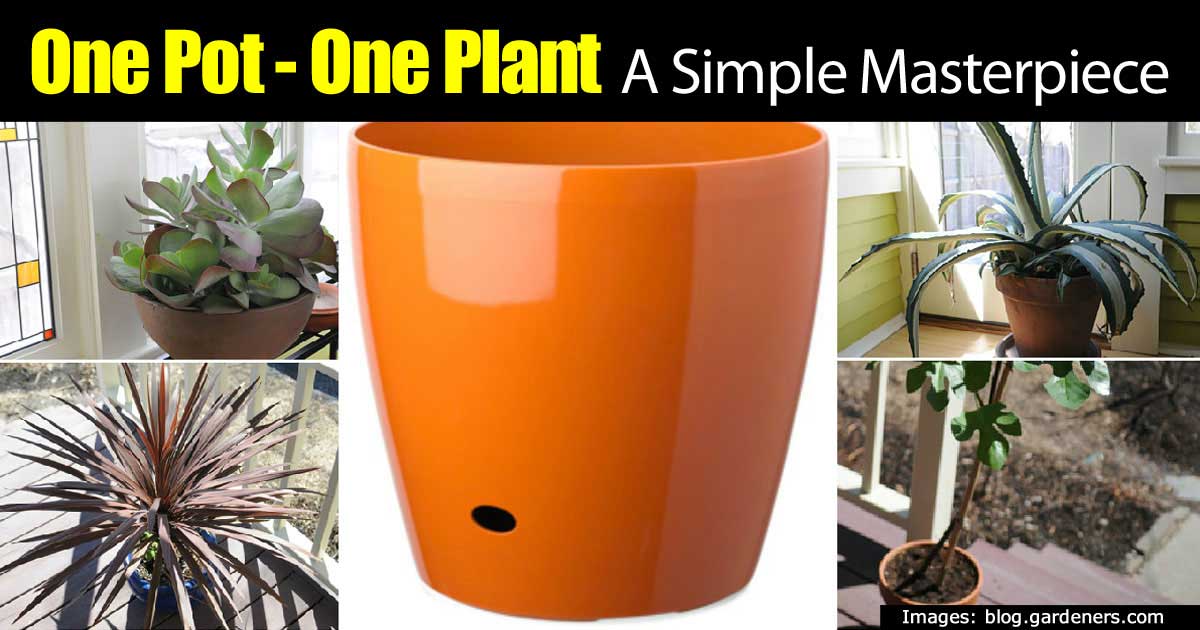Create A Plant in a Pot Masterpiece

Sometimes we try to complicate things. In much of my life I’ve found the KISS principal serves me well – Keep It Simple Stupid. Selecting pots, tubs, and other planters is part of the pleasure derived from cultivating house plants. Containers can be complementary accessories, even objects of art, at the same time that they provide a place for roots and soil. Take for example:
The Unglazed Clay Pot
This container is inexpensive and makes a good starting place for young plants. New clay pots have an orange-red color that may clash with some flowers and surroundings. However, the pots weather to a certain neutrality that goes well with almost anything. The top of a standard clay pot is as wide as it is high. The important thing to remember about unglazed clay pots is that they evaporate moisture through the sides as well as at the soil surface.
This action keeps roots cooler in hot, dry weather but, at the same time, it may be impossible to keep the soil and plant roots sufficiently moist without constant watering. To prevent rapid evaporation, place the clay pot inside a glazed jardiniere, or mulch the soil surface with pebbles. It is possible also to seal clay pot walls by coating them with shellac or any color paint.
Cleaning Pots
Plastic and glazed ceramic containers can be cleaned in detergent and warm water just as if they were dishes; unglazed clay requires more strenuous activity. When subjected to constant moisture, the sides of clay pots become mossy, and often displays a white crusting from fertilizer salts. Use a stiff brush and hot, sudsy water to clean them.
To clean empty clay pots, place them in a pail of hot water to which a half cup of household bleach has been added. Let stand a few hours, then scrub and rinse clean.
Tubs for Large Plants
The first plant tubs were probably wooden kegs or barrels. These are still useful where a round, rustic container fits the setting. Other wooden tubs made of moisture-resistant cedar, cypress, or redwood may be round, square, rectangular, triangular, hexagonal, or octagonal.
Whether made commercially or at home, they may be stained, painted, or left natural. Many handsome plastic planters have been designed to go with contemporary furnishings. Some tubs made of wood and bamboo can be used with any decorating scheme, but they are especially useful with an oriental decor.
Decorators often place urns of cast iron, clay, or concrete in a formal entrances. Foliage plants, when added, give the urns a final touch of elegance.
Any large jardiniere, kettle, or decorative bucket may be used as a plant tub. A copper cooking kettle or old bucket is often used as a planter with early American interiors. Just keep it simple. Containers do not need to be fancy. The same holds true very often in the garden. It’s the simple touches and designs that frequently create so much impact.
Learn how to complete your very own single pot, single plant, work of art. While arrangements of plants can be nice, a single plant can also be quite striking.
These decorative containers offer lots of possibilities!
A couple quick tips:
- When picking a plant that will be held in a single pot it is best to think of it as a type of art like sculpture.
- Choose both the planter and the plant with care by keeping in mind color and structure.
A few plants which are great for this style of gardening: African Lily – Agapanthus, Bamboo, and Fuchsia. For more details visit the One Pot-Plant Masterpiece
